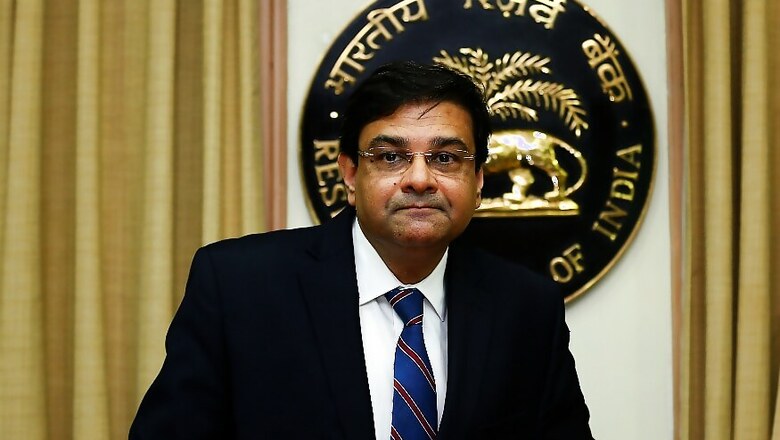
views
New Delhi/Mumbai: The Centre and Reserve Bank of India (RBI) are getting close to ironing out some of their policy differences, said two sources familiar with the discussions, as they seek to defuse worsening tensions that had threatened to unnerve investors.
While the rift is far from healed, the sources said enough progress had been made to avoid acrimony at a board meeting of the RBI next Monday. The threat that RBI Governor Urjit Patel would quit, as reported by some newspapers last week, is also thought to be off the table for now, they said.
The uneasy truce is likely to see the RBI ease up on some lending restrictions to help the government stimulate the economy, said the sources. One source said the RBI could agree to tweak restrictions on lending to improve credit flows for smaller companies with a borrowing limit of Rs 250 million.
Neither the RBI nor the finance ministry responded to requests for comment for this article. The prime minister’s office declined to comment.
It is unclear how much of a role Prime Minister Narendra Modi played in defusing the tension. According to some reports, Modi met Patel last week in an attempt to sort out the contentious issues but officials in the prime minister's office and the RBI said they did not know of such a meeting. Modi had appointed Patel as the RBI governor in 2016 for a three-year term that ends in September next year.
For weeks, government officials in New Delhi have been pressuring the Mumbai-based RBI to accede to a range of demands, from easing lending curbs to handing over surplus reserves to the government. This prompted RBI Deputy Governor Viral Acharya to warn late last month that undermining a central bank's independence could be "catastrophic," bringing the feud into the open.
Tensions were expected to come to a head at Monday's meeting as government representatives on the board appeared to be ready to turn up the heat on Patel and accuse the RBI of being intransigent in the face of government demands. Now, it seems likely there will be a more constructive atmosphere with agreement on some issues, and disputed questions shelved for another day, the sources said.
Can’t agree to everything
The government is keen to provide more stimulus to the economy heading into next year's election, especially as the incomes of many farmers have been hit by low crop prices. At the same time it doesn't want a bust-up with the central bank, which could badly affect investor sentiment and provide political fodder to the Congress.
"The government understands the regulator will remain a regulator and can't agree to all demands," said a government official, who declined to be named, referring to the RBI.
While the official did not give any details of the solutions being worked out with the RBI, he acknowledged that the government did not want to trigger Patel's departure at such a sensitive time.
There are five key state elections in the next few weeks and a general election due by May. The Congress party has already been harrying the government over allegations of corruption in the Rafale deal and infighting between the top officials of the Central Bureau of Investigation (CBI).
An RBI board member said that helping to ease tensions was the idea that both sides wanted a healthy economy. It was just a question of how to get there. "The main issue is how to boost credit growth," the member said, referring to the credit crunch facing small companies.
Economics Affairs Secretary SC Garg is expected to make a presentation in the board meeting to outline the concerns of the finance ministry and could bring up the question about the transfer of surplus cash reserves held by the RBI, the sources said.
The board member said that an expert panel may be set up to work out the appropriate level of contingency reserves for the RBI, effectively kicking that question down the road. The RBI introduced a so-called corrective action plan in 2014 for 11 state-run banks with bad loan issues and depleted capital. That plan included curbs on risky lending and RBI officials said, as a result, the banks' loan growth fell to zero and had remained there since 2016, from 10 per cent in 2014.
According to the RBI board member, the government wants the RBI to ease those curbs and lower capital requirements for the 11. Some improvements in the balance sheets of those lenders might give the RBI leeway to do that, although the RBI would prefer to give the mending process more time, said another official who is aware of discussions within the central bank.




















Comments
0 comment